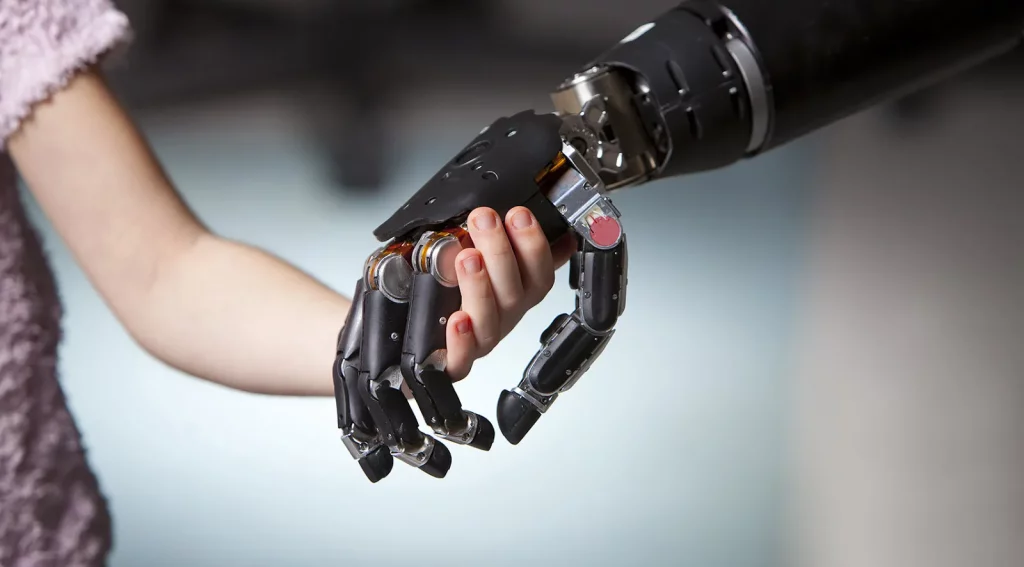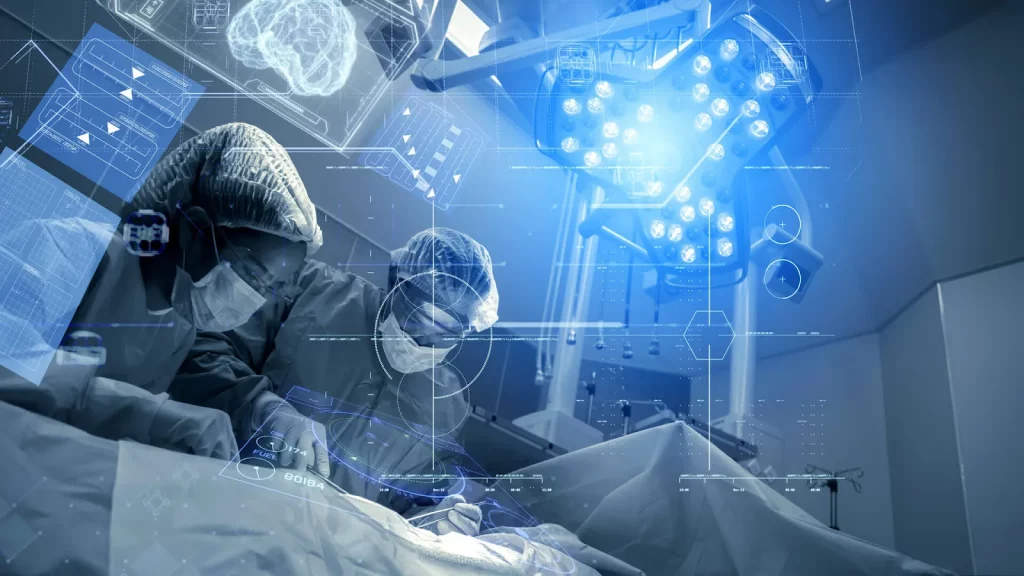When surgeons embark on the delicate dance of repairing the human body, it’s the technological innovation that often leads the way, ensuring each step is more precise and less invasive.
You’ve likely heard of robotic arms that extend the capabilities of human hands, or imaging techniques that peel back layers of mystery, offering a clarity that was once the stuff of science fiction.
These innovations aren’t simply gadgets and gizmos; they represent pivotal changes in the way you perform surgeries, improving outcomes and minimizing risks for your patients.
As you consider the impact of cutting-edge tools and methods, think about how they’ve transformed not only the procedures themselves but also the training and preparation you undergo as a medical professional.
The question lingers: how will continued technological advancements redefine the very nature of surgery, and what could this mean for the future of patient care?
Let’s explore the possibilities that lie just over the horizon of today’s operating theaters.
Key Takeaways
- Minimally invasive techniques such as laparoscopy, endoscopy, and robot-assisted surgery minimize tissue trauma, reduce postoperative pain, and lead to quicker recoveries.
- Robotics in surgery offer enhanced precision, improved perception of the operative field, and smaller incisions, resulting in better patient care and surgical outcomes.
- Enhanced imaging and diagnostics, including 3D imaging and artificial intelligence, improve navigation and diagnostic accuracy, enabling surgeons to make more informed decisions tailored to individual patient needs.
- The use of 3D printing, computer-aided design, and robotic assistance in creating custom prosthetics and implants optimizes functionality and patient outcomes.
Everything You Need To Know About Us – Physicians Group, LLC
The expert team at Physicians Group, LLC, a specialized clinic for automobile accident injuries, offers comprehensive care across a network of 27 accessible locations.
TOUCH BASE FOR ASSISTANCE WITH YOUR APPOINTMENT ONLINE
With a widespread presence in regions including Auburndale, Bradenton, Brandon, Palmetto, Ft Myers, Jacksonville Beach, Jacksonville, Orange Park, Lakeland, Clearwater, New Port Richey, Port Charlotte, Sarasota, Sebring, Spring Hill, St. Petersburg, Tampa, Temple Terrace in Florida, as well as Brooklyn Park, Robbinsdale, Minneapolis, Richfield, and St Paul in Minnesota, Physicians Group, LLC is a prime destination for addressing injuries post-automobile accidents.
Our Expertise
Endorsed by The Joint Commission, Physicians Group, LLC stands as a comprehensive hub for the treatment of musculoskeletal injuries. Its multidisciplinary team comprises seasoned medical doctors, skilled chiropractors, osteopathic professionals, attentive nurse practitioners, and proficient physician assistants.
The group is adept at managing a spectrum of musculoskeletal discomforts, from joint, back, to neck pain. By leveraging state-of-the-art technology and diagnostic tools like DynaROM™ motion testing, digital motion X-rays (DMX) for the cervical spine, and cutting-edge regenerative therapies, they are equipped to foster optimal recovery.
Emphasizing a nurturing, patient-focused atmosphere, the dedicated personnel at Physicians Group, LLC ensures thorough consultations and in-depth discussions, allowing them to grasp every patient’s specific complaints and aspirations fully. Treatment plans emphasize non-invasive and integrative approaches, with surgical interventions being considered as necessary.
Don’t allow the aftermath of vehicle accidents to impede your lifestyle. Initiate your path to recovery at Physicians Group, LLC by reaching out to your local branch or by securing an appointment through our online platform.
Our Services:
Contact Us:
→ https://physiciansgroupllc.com/contact-us/
Pioneering Minimally Invasive Techniques
Within the realm of modern medicine, surgeons are increasingly adopting minimally invasive techniques that offer patients reduced recovery times and lower risk of complications. These procedures, which include laparoscopy, endoscopy, and robot-assisted surgery, rely on small incisions or natural orifices, thus minimizing tissue trauma. The precision of these techniques is enhanced by advanced imaging technologies and specialized instruments, allowing for targeted interventions.
As a patient, you benefit from less postoperative pain and quicker mobilization, which contribute to a faster return to daily activities. Moreover, the lower risk of infections and hernias post-surgery correlates with a reduced need for follow-up surgeries. These advancements signify a shift towards patient-centered care, emphasizing safety, efficacy, and overall health outcomes.
Robotics in the Operating Room
Building on the foundation of minimally invasive techniques, robotics has emerged as a groundbreaking tool that’s reshaping the landscape of surgical procedures in the operating room. You’ll find that this integration of technology extends the capabilities of surgeons, offering precision that was previously unattainable. Here’s how robotics is making an impact:
- Enhanced Precision: Robotic systems provide surgeons with control over minute movements, reducing the margin of error.
- Improved Visualization: High-definition 3D views enhance the surgeon’s perception of the operative field.
- Dexterity: Articulated robotic instruments surpass the natural range of human hand movements.
- Recovery Time: Patients benefit from smaller incisions, leading to quicker recoveries and reduced hospital stays.
Robotics in surgery isn’t just an addition; it’s a transformative element that’s setting new standards for patient care and surgical outcomes.
Enhanced Imaging and Diagnostics
Revolutionizing the realm of surgery, enhanced imaging and diagnostics frequently empower surgeons with unprecedented clarity and detail, significantly improving patient outcomes. You’ll find that innovations such as 3D imaging, intraoperative MRI, and advanced endoscopic techniques provide real-time, high-resolution views, facilitating precise navigation through complex anatomical structures. These advancements reduce surgical risks by allowing for more accurate tumor resections and the preservation of critical tissues.
Furthermore, the integration of artificial intelligence with imaging modalities augments diagnostic accuracy, enabling you to discern subtleties not readily apparent to the human eye. As a result, you’re equipped to make more informed decisions, tailor interventions to individual patient needs, and monitor the efficacy of treatments with greater precision.
This technological synergy is pivotal in the continuous evolution of surgical care.
Custom Prosthetics and Implants
Surgeons now routinely harness the power of custom prosthetics and implants, tailoring them to fit each patient’s unique anatomical structure with remarkable precision and compatibility. This individualized approach is pivotal for optimal functionality and patient outcomes.
Consider the following:
- 3D Printing: Advanced technologies such as 3D printing enable the creation of implants that match the precise contours of a patient’s body, reducing the risk of rejection and improving integration with existing tissue.
- Biocompatible Materials: The selection of materials that interact favorably with biological tissue is critical to prevent adverse reactions and ensure long-term implant success.
- Computer-Aided Design (CAD): Utilizing CAD for prosthetics allows a meticulous level of detail in design, ensuring a near-perfect fit for enhanced performance and comfort.
- Robotic Assistance: Robotic systems can assist in the precise placement and alignment of implants, increasing the accuracy of surgical interventions.

Telemedicine and Remote Surgery
Telemedicine and remote surgery represent a significant leap forward in the realm of medical services, expanding access to specialized surgical expertise regardless of geographical constraints. You’ll find these technologies enable surgeons to consult, diagnose, and even operate across vast distances using advanced communication platforms and robotic systems. The precision of such remote operations hinges on high-definition video feeds and real-time data transmission, ensuring that the tactile response and control mimic in-person procedures.
You must understand that the adoption of telemedicine and remote surgery requires rigorous standards for network reliability and cybersecurity. It’s imperative to maintain patient safety and privacy. Moreover, the integration of these technologies necessitates significant investment in infrastructure and training, ensuring that healthcare providers are competent in their use and can maximize their potential to improve patient outcomes.
Frequently Asked Questions
How Has Technological Innovation Impacted the Training and Education of New Surgeons?
Technological innovation has revolutionized your training by providing simulation tools and virtual reality experiences, enabling you to practice complex procedures safely and gain proficiency before operating on actual patients.
What Ethical Considerations Arise From the Use of Artificial Intelligence in Surgical Decision-Making?
You must consider the ethical implications of AI in surgery, such as biased decision-making, patient consent, and accountability in case of errors. It’s crucial to balance technological innovation with ethical responsibility.
How Does the Advancement of Surgical Technologies Affect Healthcare Costs and Insurance Coverage?
As surgical technologies advance, you’ll find healthcare costs generally increase, which impacts insurance coverage, demanding more nuanced policies and potentially higher premiums for you to maintain access to cutting-edge treatments.
What Are the Implications of Technological Innovation on Patient Privacy and Data Security Within Surgical Contexts?
You must consider that new surgical tech can risk patient privacy, as data breaches become more likely with increased digitalization. It’s crucial to balance technological innovation with robust data security measures.
How Is the Environmental Impact of New Surgical Technologies Being Addressed in the Medical Field?
You’re seeing the medical field tackle the environmental impact of new surgical technologies by adopting eco-friendly materials, improving waste management, and employing energy-efficient equipment to mitigate their carbon footprint.
Conclusion
You’ve seen how technological innovation propels surgical advancements, from minimally invasive methods to remote surgery.
Robotics enhance precision, while improved imaging ensures accurate diagnostics.
Custom-built prosthetics offer patient-specific solutions, and telemedicine breaks geographical barriers.
These innovations not only refine surgical outcomes but also promise a future where procedures are safer, recovery times shorter, and patient care personalized.
Embrace these changes, as they’re reshaping your surgical experiences and outcomes with remarkable precision and efficiency.
